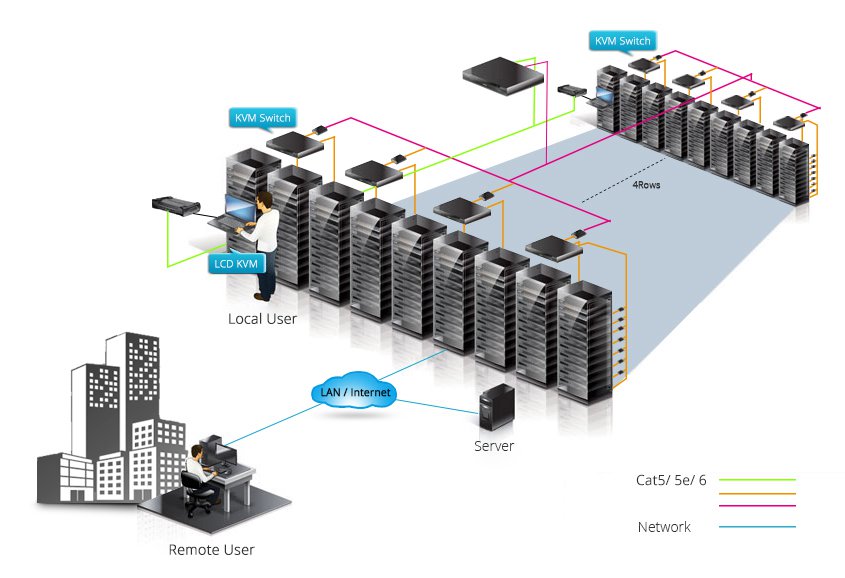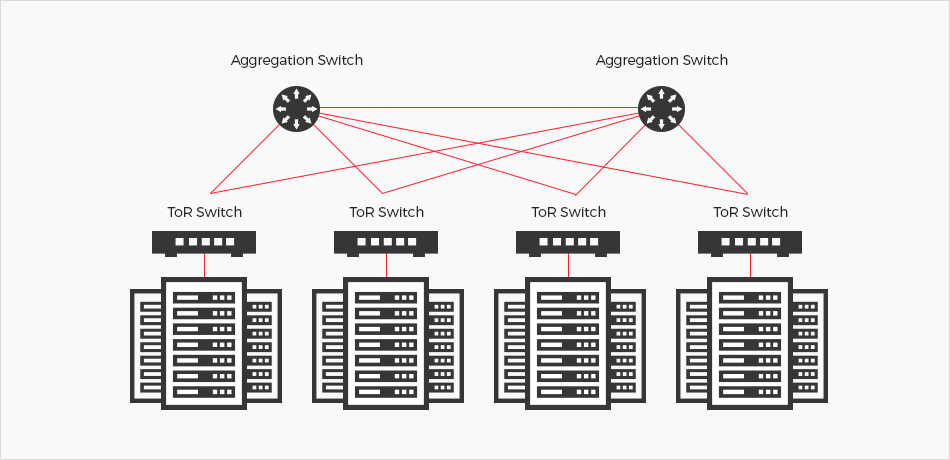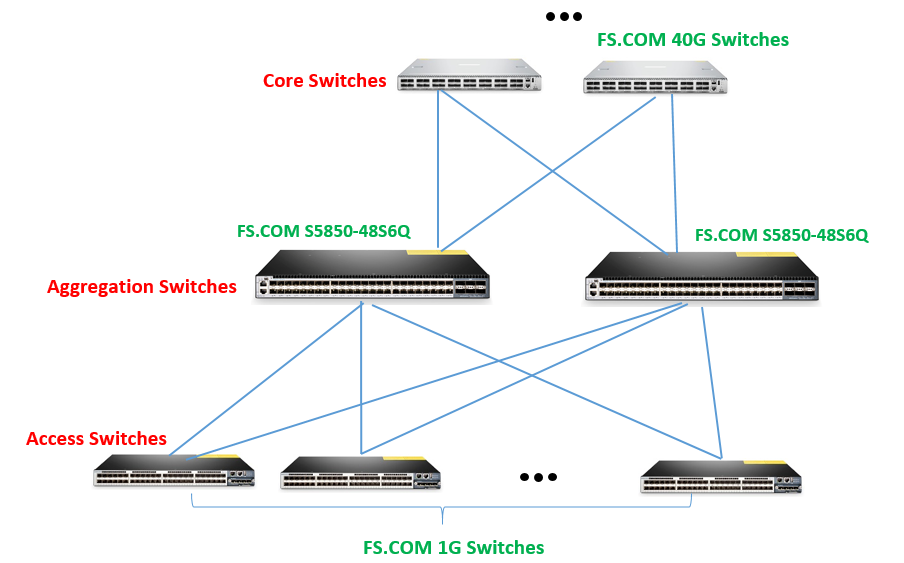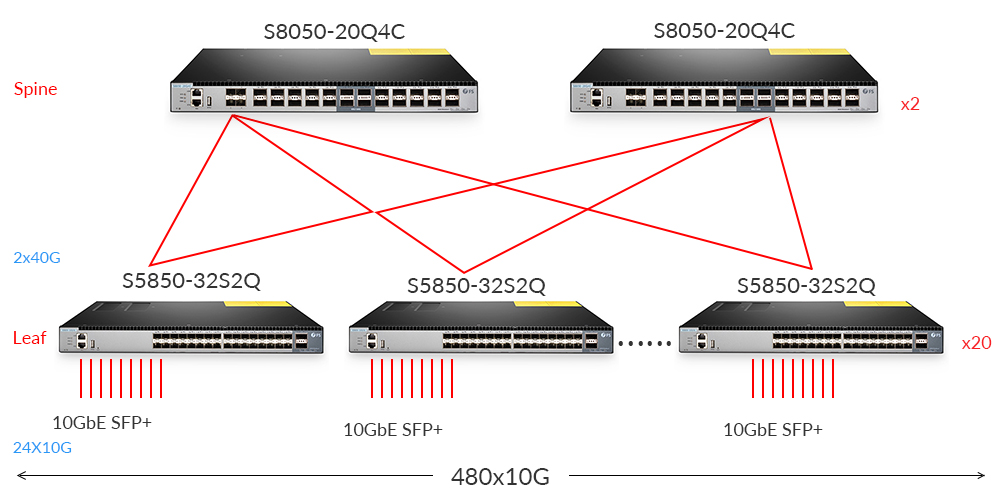Today, data centers and companies have to deal with the space limitation of lots of computers. They need a method to control the increasing numbers of computers and other networking devices efficiently. KVM switches are invented to combat this issue that is taking up valuable space and time. So what is a KVM switch and how does it work?
Figure: KVM switch is widely used in our life.
What Is a KVM Switch?
What is KVM? KVM stands for keyboard, video and mouse. And as for what is a KVM switch, it’s technically “keyboard, video and mouse switch”. KVM switch is a hardware device that allows users to control different computers through one set of keyboard, video monitor and mouse. This is the KVM over IP solution, which is very useful if the server settings are located off-site and you don’t want to drive over there each time when you need to make changes. The switches will be assigned an IP address and accessed from any place in the world with the right username and password.
In addition, we should note that, although KVM switch and Gigabit Ethernet switch both can control multiple computers or servers, they are different devices. KVM switch is usually considered as a hardware device, which is popular when people have upgraded their computer systems or add new computers but don’t want to invest in a second keyboard, display and mouse. While Ethernet switch is regarded as a central hub. Commonly, it’s connected to each computer or network device in an Ethernet. Therefore, they are two different devices with different functions.
How Does KVM Switch Work?
We have a good understanding of the question what is a KVM switch. It can control more than two or greater numbers of computers(over 500). Users can use Cat5 cables or the specific KVM cable kits to connect the computers to the KVM switch. Then, connect the keyboard, display and mouse console to the KVM switch. If the switch is equipped with the console, this step could be skipped. Now users can use a button, on-screen display controls or hot keys on the keyboard to switch from one computer to another.
Which Type of KVM Switch Do I Need?
Designed for various end-user needs, there is a considerable choice of KVM switches on the market. Before buying, you should consider:
- How many computers do I need to control?
- What type of KVM switch do I require?
- Do I need an on-screen display?
Use the table below to help you make a suitable decision.
|
FS ID
|
|||
|
Server Port
|
8 × HDB-15 Female
|
16 × RJ45 port
|
8 × RJ45 port
|
|
Console Port
|
USB/PS2, VGA
|
USB, VGA
|
USB/PS2, VGA
|
|
On-screen Display
|
Yes
|
Yes
|
No
|
All these KVM switches are made by FS.COM, which can be accessed from any computer on the LAN, WAN or Internet. With easy installation and use, they’re the optimal solutions for controlling up to 8 or 16 computers or servers.
Conclusion
What is a KVM switch? It’s an ideal tool for saving time and energy when lots of computers or servers are involved. To find out more about our KVM switches with high performance, as well as other networking options like 10Gb Ethernet switch, patch panels, please visit FS.COM.




